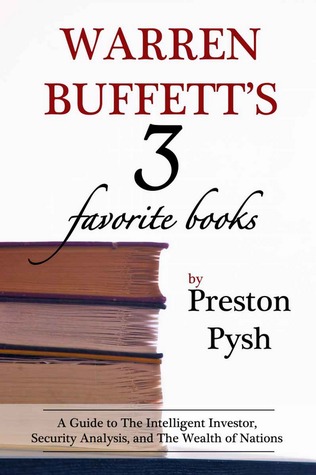More on this book
Community
Kindle Notes & Highlights
the existence of the iPod you know today will absolutely not be the same product then. Although Apple may be the leader in whatever emerging technology replaces the iPod, there is also a good chance it will not.
if you were to invest in American Eagle, would its products still be the trend for children in 2042. I would argue that’s a risky call.
That doesn’t mean it’s not a great business, it just means it’s something you need to be willing to accept the risk for.
When he purchases stocks, he plans on owning the companies longer than his lifetime.
Section 3 A stock must be stable and understandable.
Without being able to predict reasonable performance into the future, calculating this value is impossible.
Section 4 A stock that is severely undervalued.
“Intrinsic value can be defined simply: It is the discounted value of the cash that can be taken out of a business during its remaining life.” –Warren Buffett
“The calculation of intrinsic value…is not so simple. As our definition suggests, intrinsic value is an estimate rather than a precise figure, and it is additionally an estimate that must be changed if interest rates move or forecasts of future cash flows are revised.
Your appetite for risk and the movement of the federal note will have an enormous impact on the “estimated” intrinsic value.
the method for estimating the future cash flows of a business.
1 Estimating the future cash flows ...
This highlight has been truncated due to consecutive passage length restrictions.
Future Cash Flows (ten year period) = Future Book Value + Dividend Payments
Equity
In fact, in 2008, GM was worth less than $70 billion in negative equity! To my surprise, people still traded the company at $4 a share. Eventually, in 2009, GM went bankrupt and the shareholders lost all their money.
The balance sheet
it shows the current equity of a business at a certain point in time.
“book value.”
When someone says book value, he is really saying equity per share.
Total Equity / Total Shares Outstanding = Book Value
In a simple world, people might think the company should trade on the stock market for the book value.
This chart serves as a great example of finding a company that has steady and calculable growth.
“In other words, the percentage change in book value in any given year is likely to be reasonably close to that year's change in intrinsic value.” –Warren Buffett
Now don’t forget, this company’s book value is growing because of one figure – the earnings.
This future book value figure is the first of two variables that are used in determining the sum of future cash flows.
Dividends
I see companies on the open market paying their owners dividends that exceed the EPS. It doesn’t make sense, and I would strongly encourage you to avoid companies that slowly devour themselves in an effort to keep their shareholders happy.
Typically, when I see a company making a “high” dividend payment (i.e., something that is 75% of its EPS), you’ll typically notice that the company’s book value (or equity per share) remains constant or even decreases in value from year to year.
as we move into part 2, we’ll now discount that cash flow by the 10 year federal note.
2 Current Intrinsic Value
If that calculation makes your head hurt, simply use the intrinsic value calculator I’ve provided on the website. Link to Calculator
1. Cash taken out of business ($)
2. Current Book Value ($)
3. Average percent change in book value per year (%)
4. Years
5. 10 year federal note (%)
Is double the return worth the risk of buying a stock that may or may not produce the cash flow we just estimated? This is where I can no longer help you. This risk is something that you’ll have to determine for yourself.
Benjamin Graham really tried to avoid buying companies that traded at a multiple higher than 1.5 times the book value.
This value is only true if the future cash flows are accurate.
we can relatively say with confidence that the company’s book value has grown consistently and predictably.
This is one of the reasons stability is so important when analyzing a company’s potential to earn in the future.
http://www.google.com/finance#stockscreener.
The more you understand corporate accounting, the quicker you’ll be able to decipher the mathematical code that businesses report every quarter.
As you can see, math plays an important part in understanding the value of a business. Without understanding these skills, I would strongly discourage anyone from value investing in individual stock picks.
PART III The Other Important Stuff
Chapter 8 Preferred Stock
preferred stock is more like bonds.
Common Stockholders’ Equity = Total Stockholders’ Equity - Total Book Value of Preferred Stock
total book value of the preferred stock.


